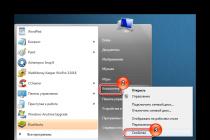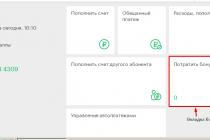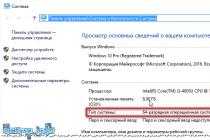So Xiaomi smartphones I have a long history of warm relationships. Despite all the criticism of the manufacturer, I personally did not encounter any serious problems described on the forums by other users. The secret of luck is simple: I have never used Xiaomi smartphones that are not intended for international sale. Such devices do not have Russian/Ukrainian language and Google services, are often flashed by sellers with unofficial firmware mods (with translation and Google somehow added), due to which 90% of all problems arise. International version Redmi Note 4 was of great interest to me. Therefore, as soon as prices for it in Ukrainian retail have stabilized, do not take xiaomi review Redmi Note 4X I couldn't.
Blue light filter Color temperature and saturation Reduce display
Namely, the buttons under the display. These are touch sensitive, and the main objection is the lack of backlighting. In practice, this isn't much of a problem, as long as you don't move between multiple devices with different layouts, you use them very quickly, and you use the buttons without any noticeable limitation or blindness. Reminders can also be canceled - the house is traditionally in the middle, the back is on the right, and left button may be lengthened as the last run or menu. You can also set a long press.
The presentation of Xiaomi Redmi Note 4X for India took place back in January. Then there was a little confusion with the name, in some the novelty was dubbed as Note 4 Pro. But, this is not so important, the main thing is that now the international version of Xiaomi Redmi Note 4X is freely sold in Ukraine at a price of about 4.5 thousand hryvnias. Therefore, we offer a review of Xiaomi Redmi Note 4X and a comparison with the ideological predecessor, Xiaomi Redmi Note 3 Pro. After all, it so happened that many users do not have confidence in MediaTek chips, and therefore do not consider smartphones based on them as a purchase option. Let's start with a comparison.
SAR levels indicate the amount of electromagnetic radiation absorbed by the human body while using a mobile device.
It can only be activated separately for reminders and charging. Unlike many of his brothers and sisters, he no longer lies with an iron sphere in the absence of some of the frequencies used by us. In terms of performance, you can count on a smart-tuned phone. If you don't have unreasonable demands on it, it can handle normal daily tasks. Not only do you run complex games, but you play them with acceptable fluency, often without having to turn down detailed settings.
Redmi Note 3 Pro vs Redmi Note 4X - Comparison
| Xiaomi Redmi Note 4X | Xiaomi Redmi Note 3 Pro | |
| Material, dimensions, weight | Aluminum (plastic inserts), 76 x 151 x 8.45 mm, 165 grams | Aluminum (plastic inserts), 76x150x8.65 mm, 164 grams |
| Screen | IPS, 5.5″, 1920x1080, glass 2.5D | IPS, 5.5″, 1920x1080 |
| Operating system | Android 6.0.1, MIUI 8 | Android 5.1, MIUI 7, updated to Android 6.0.1, MIUI 8 |
| Platform | Qualcomm Snapdragon 625 | Qualcomm Snapdragon 650 |
| Nuclei | 8 cores (Cortex A53, up to 2GHz) | 6 cores (2 Cortex A72 up to 1.8 GHz, 4 Cortex A53 up to 1.4 GHz) |
| Graphics | Adreno 506 (130 GFLOPs) | Adreno 510 (180 GFLOPs) |
| RAM | 3 GB (4 GB version in preparation) | 2 or 3 GB |
| Persistent memory | 32 GB (64 GB version in preparation) | 16 or 32 GB |
| Memory card slot | Yes, compatible with sim2 slot | |
| Main camera | 13 MP, f/2, Samsung or Sony, 1.12µm pixels, phase detection autofocus, FullHD video | 16 MP, f/2, Samsung, 1µm pixels, phase detection autofocus, FullHD video |
| Front camera | 5 MP, F/2, Full HD video | 5 MP, F/2, Full HD video |
| Battery | 4100 mAh | 4050 mAh |
| Number of SIM cards, connection | 2 SIM cards, GSM, 3G (HSPA and CDMA), 4G (LTE) | |
| Navigation | GPS, BeiDou, GLONASS | GPS, BeiDou, GLONASS |
| Additionally | Fingerprint scanner IR port (for controlling household appliances) When booting, the phone does not heat up significantly, even with longer playback, do not worry about unpleasant grip. The fingerprint reader remembers up to five fingerprints and is placed right where the index finger would expect. It's still a fraction of a second, but you won't be waiting for the reader. Even with heavy traffic, you often get two days, with a normal fit, you can certainly get two days of endurance. Many users should have no problem getting three days without using charger. The system works fast, it doesn't bother or get stuck. You can create so many places that you stop having fun before adding them before you're done. In the list of recent applications, you can choose between displaying icons and screen views, the notification panel contains 11 wireless module toggles. Gyroscope (VR compatible) |
Fingerprint scanner IR port (for controlling home appliances) Gyroscope (VR compatible) |
As can be seen from the table, the main differences between Xiaomi Redmi Note 4X and Redmi Note 3 Pro lie in the chipset model, memory sizes and camera resolution. They do not look significant, but in reality the difference between the devices is more noticeable than in theory.
It can display the top four in the header and then expand the rest, or you can split the panel into two tabs with separate notifications and toggles. Last thing running application as icons or pre-notifications Notification panel with wireless switches. In addition to setting the left button, you can set the long press action. Apart from the main power switch, you can also turn on the phone by adjusting the volume and double tapping it to launch the camera.
list of messages
You can fingerprint protect not only the phone as a whole, but also selected applications. Once you've set up your phone for the first time, you won't have to deal with unwanted apps.
Clearing the storage of remote compasses
He cares about junk files, optimizes system performance, manages application authorization, and also has an anti-virus function. The camera environment was one of the easiest trips. Everything else must be changed in the settings, the elements of which change depending on the selected mode.Case: design, ergonomics
Xiaomi Redmi Note 4X is made in the traditional Xiaomi style. Its rear panel is non-removable, made of aluminum, but the "caps" at the bottom and top (antennas are hidden under them) are made of plastic. However, there are significant design differences. Redmi Note 3 Pro has a slightly “soapy” shape, its back panel smoothly flows into the side faces. In Redmi Note 4X, the corners are more pronounced, the side edges and ends are straight. Due to this, the smartphone lies better in the hand, and if it lies with the screen down, it is more convenient to take it from the table.
Camera settings Camera settings
The main sensor has a resolution of 12 megapixels, which you only get with 4:9 widescreen only. The camera works quickly and will not interfere with your shooting. His results are hilarious, the photos are rich in color, they are sharp, but they can have a little more detail. They are shunned, but they are almost ugly.
It may not be among the thinnest items, but you probably won't break it, and thanks to the larger battery, you can expect two to three days. You don't have to worry about visible pixels, of course. As a result, not many complain, especially in the context of an adequately set price.
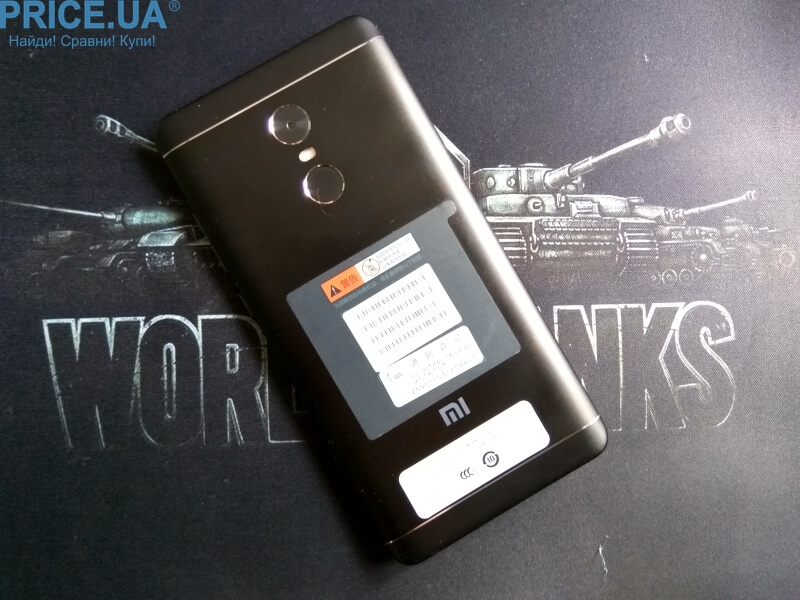
Of the main differences in design, in addition to the shape of the lid, one can note the location of the elements. On Redmi Note 4X, the speaker is moved to the bottom end (Note 3 Pro has it on the back), the IR port and headphone jack are spaced closer to the corners, and the second microphone is located near the IR port, not the headset jack. In theory, such a step should reduce the effect of interference from the sound path on the microphone, but in practice it is unlikely to see any noticeable differences. The camera and fingerprint scanner of the Redmi Note 4X are slightly lower (which is a plus), but the lock buttons, volume control, and the card slot are placed a couple of millimeters higher. It has almost no effect on convenience.
Beautiful 5.5" display with 2.5" curvature
It offers features that cost the most and packs everything into a nice package. The phone struck with excellent equipment and an attractive price. The color reproduction will enchant you, as well as excellent readability in the sun. Tempered glass is sharpened for more easy use and nicer design.
Elegant metal body with fingerprint reader
Insofar as mobile phone now accompanies us on every corner, design and processing are important. Thanks to this, the phone can be unlocked safely and incredibly easily.
High performance with octa-core processor
Three days of endurance per charge. Are you complaining about your phone's short endurance because you pay every day?
In general, the design of Redmi Note 4X looks prettier, more expensive. This is especially noticeable in the black version. The quality of the aluminum coating has also become better, the tactile sensations from it are more pleasant. If you run your finger over the lid of Redmi Note 3 Pro, you get a feeling of some kind of dryness, like from a wall painted with chalk. Redmi Note 4X is tactile closer to enameled metal. Fingerprints from sweaty fingers are collected by both devices, but they are not so noticeable on the gray “troika”. However, in the end, in terms of design and ergonomics, the advantage (albeit small) is clearly on the side of Redmi Note 4X.
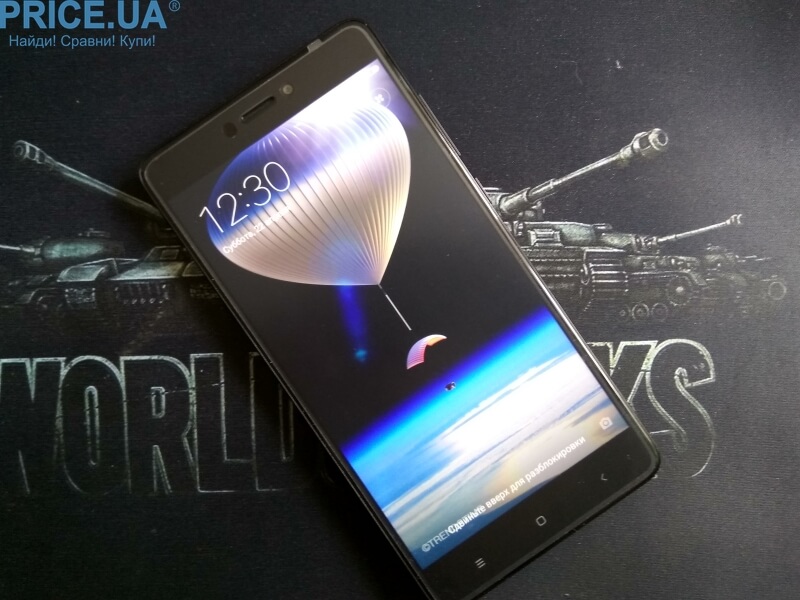
Screen: color reproduction, brightness, sensor
Smartphone screens are almost the same. Both smartphones use a 5.5-inch IPS matrix with FullHD resolution, the sensor is mounted without an air gap (OGS design). The brightness of the displays is the same, about 400 cd / m2, and it is enough for viewing in direct sunlight. The tested samples of Redmi Note 3 Pro and Note 4X use LCD panels of the same model - BOE nt35532. Screens made by Sharp, Tianma, AUO are also possible, which do not differ significantly in quality (Xiaomi simultaneously orders components from different manufacturers).

In general, the picture quality can be called high, but there is still a reason to complain. Some users may be upset by the not very good factory color calibration of the matrices. The tested sample of Redmi Note 4X had a default display set to warm (white is closer to yellow), while the Redmi Note 3 Pro was set to cool (closer to blue). All this is switched in the screen settings, but if you choose a warm profile for 4X, it frankly gives off yellowness, and on 3 Pro the cold profile goes blue. Copies from other parties may have the opposite, and such a lottery is not encouraging.

In general, the screen of Redmi Note 4X looks more interesting due to the rounded edges of 2.5D. It, combined with the “chopped” edges, makes the smartphone visually thinner, although the real difference in thickness with Redmi Note 3 Pro is only 200 microns (0.2 mm). Both sensors support up to 10 touches, the oleophobic coating is about the same in quality. So the screens are also almost parity, Redmi Note 3 Pro deserves a solid 4, and Note 4X can be put 4+ points.
Chipset: performance, heating, power consumption
Issue of international Xiaomi versions Redmi Note 4 based on the Qualcomm Snapdragon 625 chipset was received with mixed reception. After all, despite the fact that this chip is newer than the 650 model in Redmi Note 3 Pro, it is lower in the manufacturer’s internal hierarchy (650 is the top of the middle class, and 625 is the basic mid-range). The 625 model does not have powerful A72 cores, the graphics are almost 1.5 times slower. And in general, according to AnTuTu, the test result of Redmi Note 3 Pro is 20% higher than that of Redmi Note 4X. But in practice, only "parrot catchers" will be satisfied, and with practical scenarios, everything is a little different. 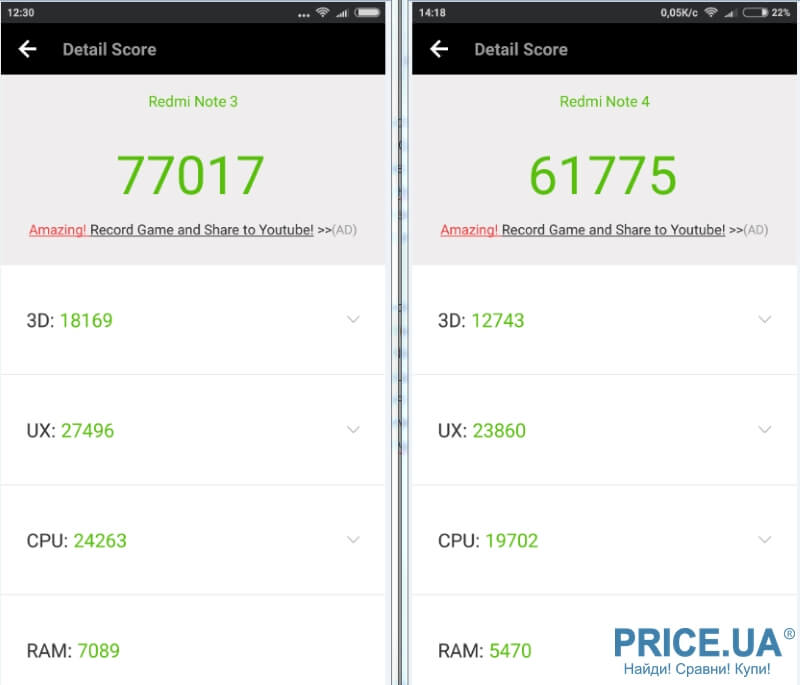
The bottom line is that the Snapdragon 625 is made according to the modern 14 nanometer process technology, and the Snapdragon 650 is made according to the already outdated 28 nm standards. Therefore, although the older chip does not suffer from overheating in the same way as the once flagship 810, it still noticeably heats up. But 625 is not prone to overheating, from the word at all. After AnTuTu tests, the Redmi Note 4X only slightly exceeded 40 degrees, but the Redmi Note 3 Pro can warm up to 57 degrees.
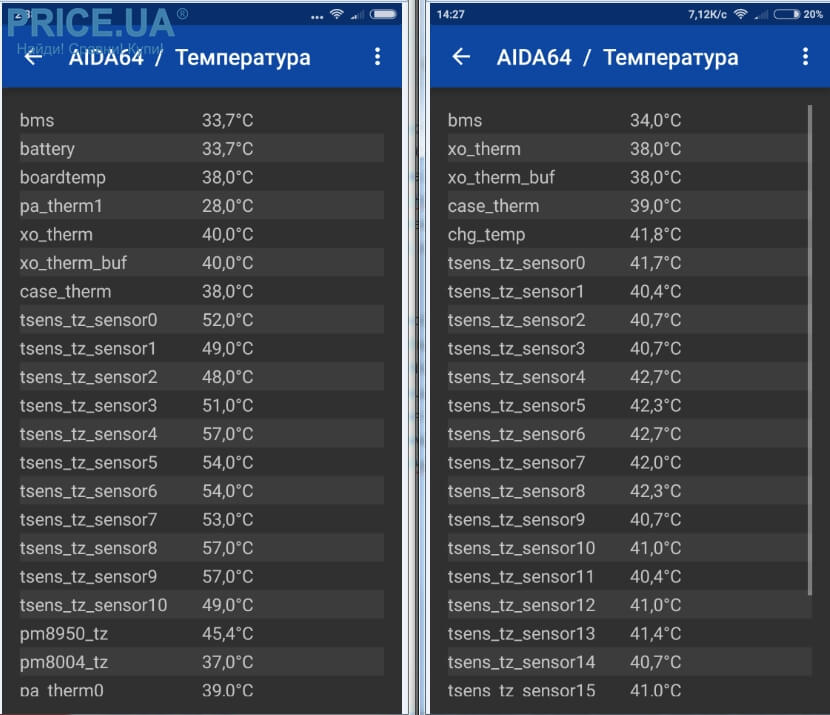
Redmi Note 3 Pro (left) vs Redmi Note 4X (right)
In the GeekBench 4 test, Redmi Note 4X is noticeably inferior to Redmi Note 3 Pro. It scores 856 points in the single-core test, against 1381. However, in the multi-core test, the newcomer looks a little better: 2949 points against 2654. At the same time, again, the temperatures of the Note 3 Pro reach almost 60 degrees, while the Note 4X does not exceed 45. If we compare the performance in practice (switching screens, launching programs, camera), the performance level is approximately the same. But in the camera, Redmi Note 4X reacts even a little faster.
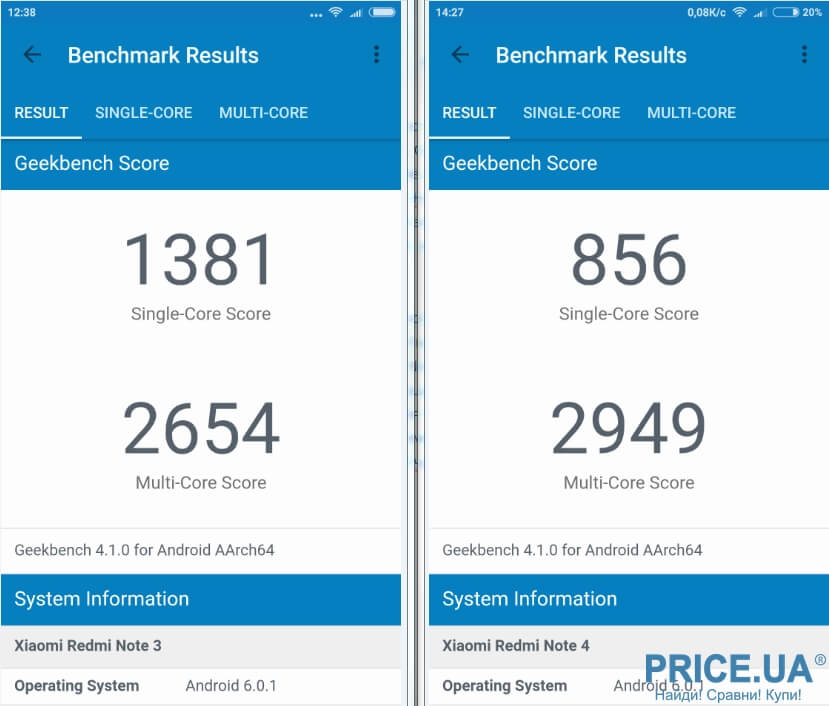
In terms of energy efficiency, the chipsets are slightly different not in favor of Redmi Note 3 Pro. In the Ampere program (with maximum screen brightness), the typical consumption of Redmi Note 4X was between 350 and 490 mA, while Redmi Note 3 Pro was between 380 and 590 mA. In both cases, Wi-Fi was active, to create a load, the list of active programs was launched and the curtain was opened. This situation suggests that web surfing at full screen brightness will drain the battery in about 8-11 (Redmi Note 3 Pro) or 9-12 (Redmi Note 4X) hours. That is, an economical chipset gives clear results in the form of a difference of about 10-20% in favor of Note 4X.
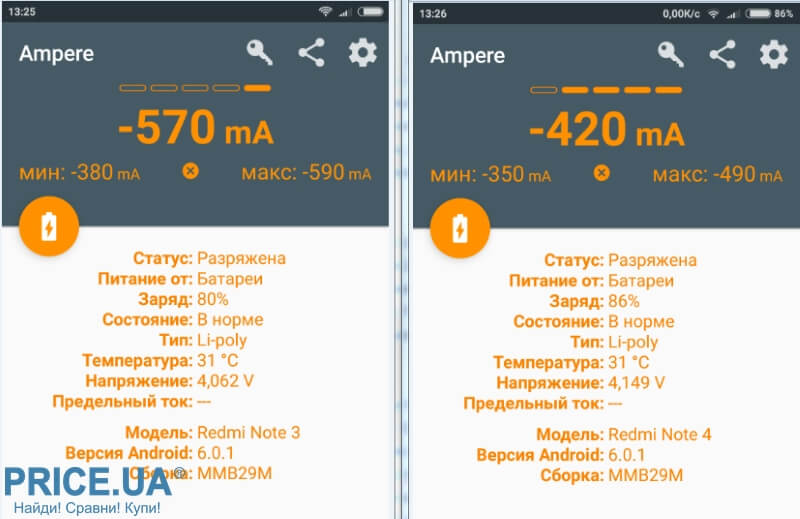
Memory: volumes, speed
Both smartphones are available in 3GB/32GB versions, but we tested the Redmi Note 3 Pro with 2GB RAM and 16GB storage. The A1 SD Bench program was used to test the memory performance. According to the measurement data, the speed internal memory in Redmi Note 4X, it turned out to be 75 Mb / s higher: 212 Mb / s versus 137. The difference in write speed was even greater: 81 Mb / s versus 45 Mb / s.
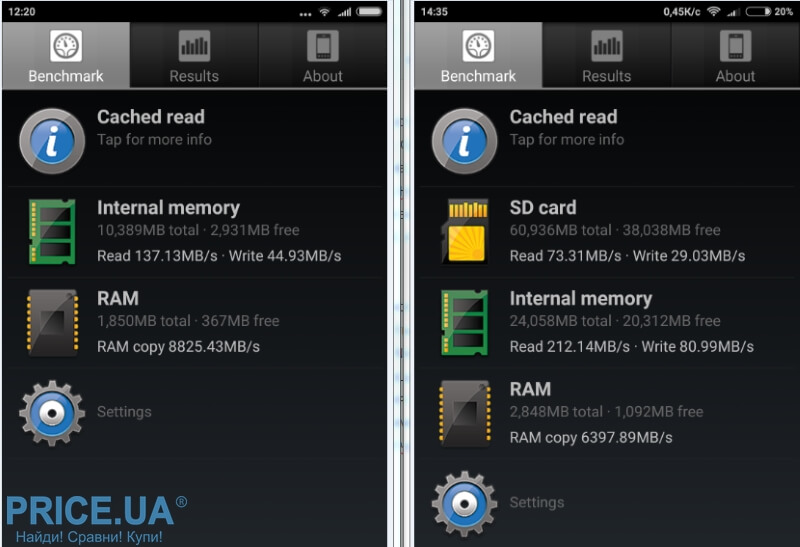
But the RAM test showed a different result: due to the dual-channel mode, Redmi Note 3 Pro accelerates to 8.8 Gb / s, and 4X shows “only” 6.4 Gb / s. However, both results can be called high, there are no complaints about them. And in practice, the difference is not visible, so from memory, smartphones have conditional parity, with theoretical advantage on the side of Redmi Note 3 Pro.
Cameras: photo comparison of Redmi Note 4X and Redmi Note 3 Pro
Both smartphones in comparison are equipped with cameras on matrices manufactured by Samsung (although Redmi Note 4X also comes with a Sony sensor). Both cameras are made on 1/3″ matrices, but since Redmi Note 4X has a resolution of 13 MP, and Redmi Note 3 Pro has 16 MP, the pixel size of the Quad is 1.12 microns, and that of the Triple - 1 micron. Theoretically, the large pixels of Redmi Note 4X should give more detailed picture with a lack of light, and Redmi Note 3 Pro is better to shoot on a bright day (when there is no shortage of lighting). However, this is just a theory. Examples of photos in the gallery below will allow you to get acquainted with the practice (on the left is Redmi Note 3 Pro, on the right is Redmi Note 4X).
Camera comparison between Redmi Note 4X and Redmi Note 3 Pro shows that new model, despite having fewer megapixels, offers more high quality Photo. When viewed at a reduced size, photos from the Note 4X show more realistic color reproduction, while the Note 3 Pro tends to go slightly warmer. If you enlarge the area of the frame, then two facts become noticeable: firstly, Redmi Note 4X has slightly higher detail, and secondly, there is more “soap” on the frames with Redmi Note 3 Pro. This is noticeable even indoors, and despite the fact that in automatic mode The Note 3 Pro takes a slightly slower shutter speed. Comparison of photos of Redmi Note 4X and Redmi Note 3 Pro once again confirms that happiness is not in megapixels.
With Xiaomi smartphones, I have a long history of warm relations. Despite all the criticism of the manufacturer, I personally did not encounter any serious problems described on the forums by other users. The secret of luck is simple: I have never used Xiaomi smartphones that are not intended for international sale. Such devices do not have the Russian / Ukrainian language and Google services, are often flashed by sellers with unofficial firmware mods (with translation and Google added somehow), due to which 90% of all problems arise. The international version of Redmi Note 4 aroused great interest in me. Therefore, as soon as prices for it in Ukrainian retail stabilized, I could not help but take Xiaomi Redmi Note 4X for review.
Blue light filter Color temperature and saturation Reduce display
Namely, the buttons under the display. These are touch sensitive, and the main objection is the lack of backlighting. In practice, this isn't much of a problem, as long as you don't move between multiple devices with different layouts, you use them very quickly, and you use the buttons without any noticeable limitation or blindness. Reminders can also be canceled - home is traditionally in the middle, Back is on the right, and the left button can lengthen like the last run or menu. You can also set a long press.
The presentation of Xiaomi Redmi Note 4X for India took place back in January. Then there was a little confusion with the name, in some the novelty was dubbed as Note 4 Pro. But, this is not so important, the main thing is that now the international version of Xiaomi Redmi Note 4X is freely sold in Ukraine at a price of about 4.5 thousand hryvnias. Therefore, we offer a review of Xiaomi Redmi Note 4X and a comparison with the ideological predecessor, Xiaomi Redmi Note 3 Pro. After all, it so happened that many users do not have confidence in MediaTek chips, and therefore do not consider smartphones based on them as a purchase option. Let's start with a comparison.
Comparison Redmi Note 3 Pro vs Redmi Note 4X
| Xiaomi Redmi Note 4X | Xiaomi Redmi Note 3 Pro | |
| Material, dimensions, weight | Aluminum (plastic inserts), 76 x 151 x 8.45 mm, 165 grams | Aluminum (plastic inserts), 76x150x8.65 mm, 164 grams |
| Screen | IPS, 5.5″, 1920x1080, glass 2.5D | IPS, 5.5″, 1920x1080 |
| Operating system | Android 6.0.1, MIUI 8 | Android 5.1, MIUI 7, updated to Android 6.0.1, MIUI 8 |
| Platform | Qualcomm Snapdragon 625 | Qualcomm Snapdragon 650 |
| Nuclei | 8 cores (Cortex A53, up to 2GHz) | 6 cores (2 Cortex A72 up to 1.8 GHz, 4 Cortex A53 up to 1.4 GHz) |
| Graphics | Adreno 506 (130 GFLOPs) | Adreno 510 (180 GFLOPs) |
| RAM | 3 GB (4 GB version in preparation) | 2 or 3 GB |
| Persistent memory | 32 GB (64 GB version in preparation) | 16 or 32 GB |
| Memory card slot | Yes, compatible with sim2 slot | |
| Main camera | 13 MP, f/2, Samsung or Sony, 1.12µm pixels, phase detection autofocus, FullHD video | 16 MP, f/2, Samsung, 1µm pixels, phase detection autofocus, FullHD video |
| Front camera | 5 MP, F/2, Full HD video | 5 MP, F/2, Full HD video |
| Battery | 4100 mAh | 4050 mAh |
| Number of SIM cards, connection | 2 SIM cards, GSM, 3G (HSPA and CDMA), 4G (LTE) | |
| Navigation | GPS, BeiDou, GLONASS | GPS, BeiDou, GLONASS |
| Additionally | Fingerprint scanner IR port (for controlling household appliances) Gyroscope (VR compatible) | Fingerprint scanner IR port (for controlling home appliances) Gyroscope (VR compatible) |
Performance, heating, power consumption
The release of the international version of Xiaomi Redmi Note 4 based on the Qualcomm Snapdragon 625 chipset was received ambiguously. After all, despite the fact that this chip is newer than the 650 model in Redmi Note 3 Pro, it is lower in the internal hierarchy of the manufacturer (650 is the top of the middle class, and 625 is the basic mid-range). The 625 model does not have powerful A72 cores, the graphics are almost 1.5 times slower. And in general, according to AnTuTu, the test result of Redmi Note 3 Pro is 20% higher than that of Redmi Note 4X. But in practice, only "parrot catchers" will be satisfied, and with practical scenarios, everything is a little different.
The bottom line is that the Snapdragon 625 is made according to the modern 14 nanometer process technology, and the Snapdragon 650 is made according to the already outdated 28 nm standards. Therefore, although the older chip does not suffer from overheating in the same way as the once flagship 810, it still noticeably heats up. But 625 is not prone to overheating, from the word at all. After AnTuTu tests, the Redmi Note 4X only slightly exceeded 40 degrees, but the Redmi Note 3 Pro can warm up to 57 degrees.
In the GeekBench 4 test, Redmi Note 4X is noticeably inferior to Redmi Note 3 Pro. It scores 856 points in the single-core test, against 1381. However, in the multi-core test, the newcomer looks a little better: 2949 points against 2654. At the same time, again, the temperatures of the Note 3 Pro reach almost 60 degrees, while the Note 4X does not exceed 45. If we compare performance in practice (switching screens, launching programs, camera) - the performance level is about the same. But in the camera, Redmi Note 4X reacts even a little faster.
In terms of energy efficiency, the chipsets are slightly different not in favor of Redmi Note 3 Pro. In the Ampere program (with maximum screen brightness), the typical consumption of Redmi Note 4X was between 350 and 490 mA, while that of Redmi Note 3 Pro was between 380 and 590 mA. In both cases, Wi-Fi was active, to create a load, the list of active programs was launched and the curtain was opened. This situation suggests that web surfing at full screen brightness will drain the battery in about 8-11 (Redmi Note 3 Pro) or 9-12 (Redmi Note 4X) hours. That is, an economical chipset gives clear results in the form of a difference of about 10-20% in favor of Note 4X.
Memory: volumes, speed
Both smartphones are available in 3GB/32GB versions, but we tested the Redmi Note 3 Pro with 2GB RAM and 16GB storage. The A1 SD Bench program was used to test the memory performance. According to the measurement data, the speed of the internal memory in Redmi Note 4X turned out to be 75 Mb / s higher: 212 Mb / s versus 137. The difference in write speed was even greater: 81 Mb / s versus 45 Mb / s.
But the RAM test showed a different result: due to the dual-channel mode, Redmi Note 3 Pro accelerates to 8.8 Gb / s, and 4X shows “only” 6.4 Gb / s. However, both results can be called high, there are no complaints about them. And in practice, the difference is not visible, so from memory, smartphones have conditional parity, with a theoretical advantage on the side of Redmi Note 3 Pro.
autonomy
The autonomy of both smartphones is on top. They can easily withstand 4 days in a gentle mode (an hour or two of active screen per day), but Redmi Note 4X still shows a slightly better result. Watching videos over Wi-Fi, at automatic screen brightness (the brightness level in the room is about 50%), consumed 5% of the Redmi Note 4X battery in an hour. Redmi Note 3 Pro under the same conditions behaved a little worse, spending 7%. Thus, theoretically, Redmi Note 4X can play YouTube videos up to 20 hours, and Note 3 Pro - up to 15 hours.
Considering that both smartphones are not inclined to lie about the charge indicators or be discharged in jerks, I willingly believe these figures. The performance of both smartphones can be considered excellent (for example, the flagship Mi5S plays video for about 10 hours in such conditions), on a five-point scale, 3 Pro pulls a solid five, and Note 4X - five plus.
Sound
In terms of musical capabilities, there is also parity between smartphones. Both have speakers that are loud and clear, although the rear grille makes the Note 3 Pro feel a bit quieter. In both cases, the sound, although clear, is deprived of low frequencies. In headphones, it is also not always possible to qualitatively “shake” the bottoms, in many cases their smallness is not enough. But if you connect decent speakers - even FLAC 24/192 sounds good, although subjectively it seems that the sound potential of the original source is not transmitted at 100%.
Redmi Note 3 Pro vs Redmi Note 4X
Finishing our comparison of Xiaomi Redmi Note 4X and Redmi Note 3 Pro, it is worth counting the strengths and weaknesses each of the devices. It should be noted right away that none of the devices have frank minuses. As for your price category(up to 5 thousand) both look just gorgeous. However, still in different aspects - outweighs this or that device.
Pros of Xiaomi Redmi Note 4X
- Design and ergonomics
- Screen
- Temperatures
- Performance in multi-core mode
- Internal memory speed
- energy efficiency
- Photo quality
- autonomy
Pros of Xiaomi Redmi Note 3 Pro
- Gaming Performance
- Single core performance
- RAM speed
Summing up, you can see that Redmi Note 3 Pro still takes performance. Its gaming power is higher, since the hardware (processor, graphics, RAM) are faster. However, sometimes such power can “crawl out sideways”. The fact is that in the summer heat (when it is +30 or even higher outside), the chipset does not have time to cool properly, and Redmi Note 3 Pro starts to overheat, start throttling in the same way as its successor based on MediaTek Helio X20. And then in the same AnTuTu, the test result drops sharply from almost 80 thousand to 50.
Therefore, we can state that in terms of balance, Redmi Note 4X is much more interesting: I ran the AnTuTu test five times in a row, but it didn’t work out to make the device warm up more than 55 degrees. The final test scores do not fall below 61 thousand. World of Tanks gives stable 30+ FPS (at high settings) even after 40 minutes of play. This, combined with some the best camera, refreshed design, more optimized power consumption, shows that Redmi Note 4X is better than Redmi Note 3 Pro. And the final score of 8:3 hints at the beginner's advantage.




